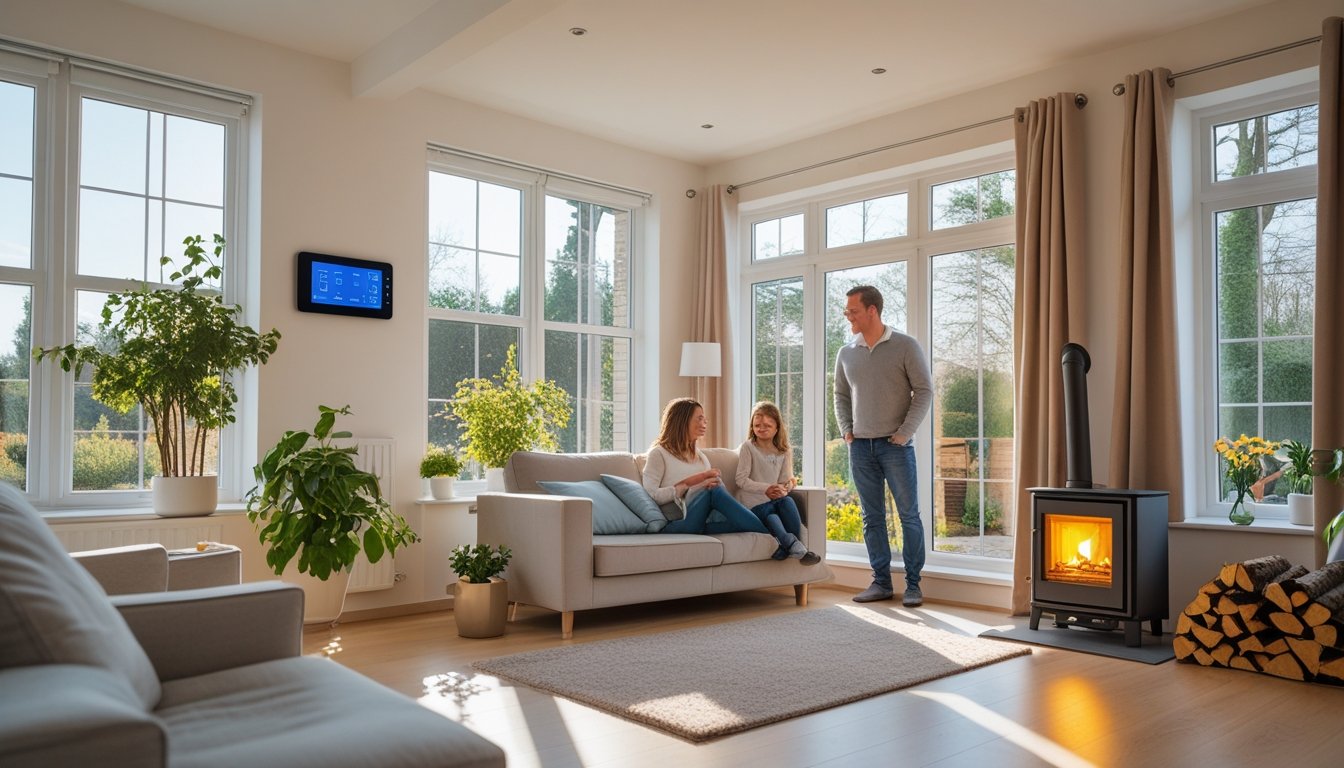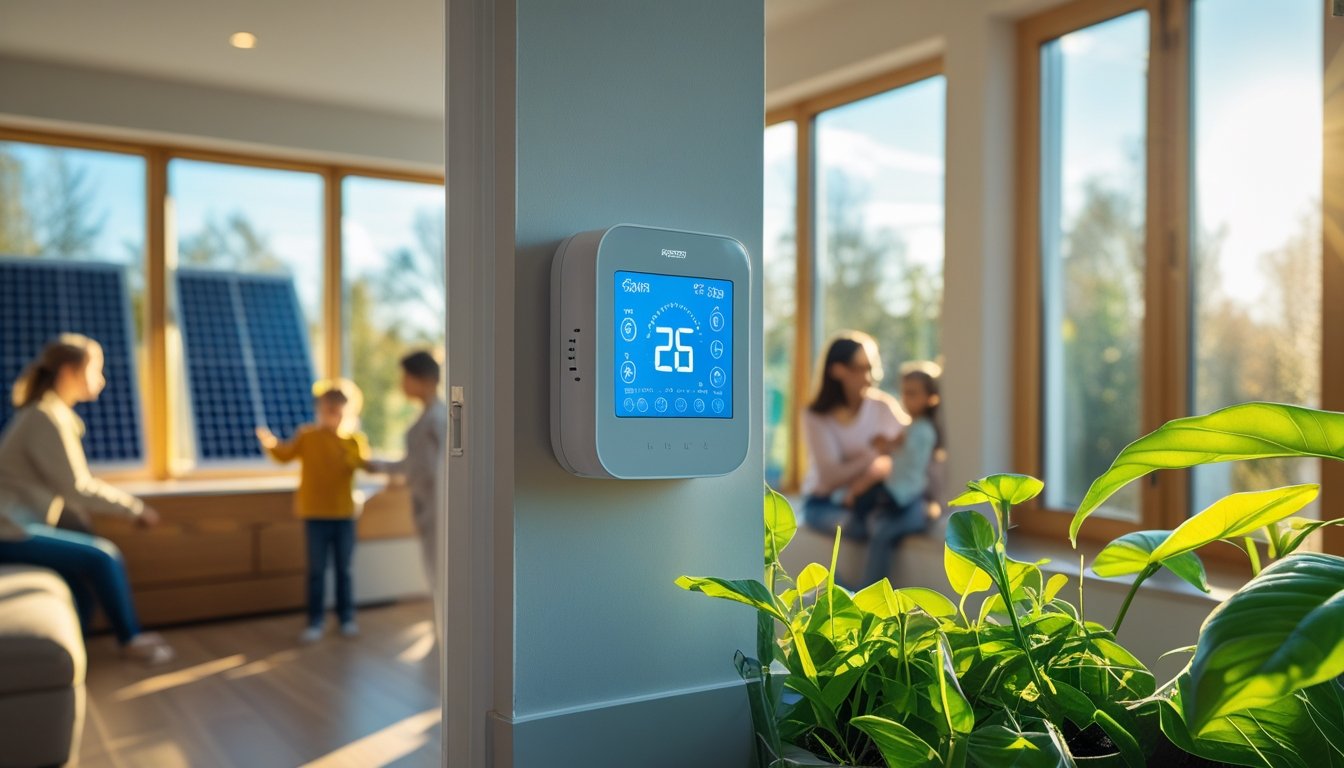Late updated: 15 Sep 2025 10:09
Written by: Sarah Hollister
Eco-Friendly Ways To Reduce Home Heating Expenses: Smart Tips For Every Household
As energy costs continue to rise, finding eco-friendly ways to reduce home heating expenses becomes vital for many of us. It's not just about cutting costs; it's also about minimising our environmental impact. We can achieve significant savings by enhancing the thermal performance of our homes with better insulation and energy-efficient windows.

Utilising smart technologies in our homes can further optimise energy use. Programmable thermostats or smart heating controls enable us to fine-tune our heating systems, ensuring warmth only when needed. This approach not only conserves energy but also results in noticeable reductions in our utility bills.
Exploring sustainable heating systems such as geothermal heat pumps or solar collectors offers other proactive solutions. When combined with government incentives or rebates, these systems can be financially beneficial. With a commitment to eco-friendly practices, we can effectively manage our home heating expenses and reduce our carbon footprint.
Key Takeaways
- Enhance home insulation and efficiency.
- Use smart technology for optimal heating.
- Explore sustainable heating systems.
Eco-Friendly Solutions to Reduce Home Heating Expenses
Reducing home heating expenses with eco-friendly solutions not only benefits our wallets but also helps the environment. Let's explore some practical and effective ways to make our homes warmer while reducing our carbon footprint.
Upgrading to Heat Pumps
Heat pumps are a highly energy-efficient solution for heating our homes. Air-source heat pumps, which draw heat from the outside air, are suitable for moderate climates. In colder regions, ground-source or geothermal heat pumps are more effective. They use a ground loop to utilise the steady temperatures of the earth to heat our homes.
The initial installation costs might be high, but the long-term savings on energy bills are significant. By converting renewable energy into heating, these systems effectively cut down on greenhouse gas emissions. Their ability to double as cooling systems in summer makes them a versatile choice for eco-friendly heating.
Harnessing Solar Energy for Heating
Solar energy presents a sustainable heating option with minimal environmental impact. Solar thermal systems use solar thermal collectors to harness the sun's energy. Systems such as solar water heating and solar air heating are effective in reducing reliance on fossil fuels.
The installation of solar panels can seem daunting at first due to costs, yet they offer substantial savings over their lifespan. By tapping into this renewable energy source, we reduce our carbon footprint significantly. Solar energy also enhances property value, making it a beneficial investment for eco-conscious homeowners looking to economise on heating expenses.
Exploring Biomass Heating Options
Biomass heating is an excellent alternative for those aiming to replace traditional fuels with biomass fuel. Systems such as pellet stoves and biomass boilers use organic materials like wood pellets or chips.
These eco-friendly heating systems provide consistent warmth while contributing to lower greenhouse gas emissions than fossil fuels. With pellet stoves, we can achieve renewable and efficient home heating. Additionally, biomass heating systems can be integrated into district heating networks, supplying entire neighbourhoods. This makes them a viable, sustainable heating solution, especially in rural or wooded areas where biomass resources are readily available.
Smart Technologies and Practical Strategies for Maximising Energy Savings

Combining smart technologies with practical strategies greatly enhances energy efficiency. By incorporating smart heating controls and improving insulation, we can significantly cut heating expenses while maintaining comfort. Let us explore each aspect in detail.
Installing Smart Heating Controls
Smart heating controls, such as smart thermostats and programmable thermostats, allow us to manage home heating more effectively. These devices enable precise temperature settings tailored to our daily schedule, ensuring the heat is on when needed and conserving energy when it is not.
With the potential to lower energy costs significantly, smart thermostats provide both comfort and savings.
Thermostatic radiator valves are another valuable tool. They deliver room-specific temperature control, allowing us to adjust the heat based on individual preferences or occupancy, further enhancing energy savings. Smart heating systems not only cut costs but also contribute to an energy-efficient home that benefits us in the long run through reduced energy consumption and increased comfort.
Improving Insulation and Air Sealing
Adequate insulation and air sealing are essential for maximising energy savings in our homes. By ensuring that our home is properly insulated, we minimise heat loss through walls, ceilings, and floors. We often overlook this aspect, but it is crucial for sustaining energy efficiency.
Sealing gaps and cracks around doors, windows, and other openings reduces draughts and prevents unwanted cold air from entering. This not only augments the effectiveness of our heating systems but also enhances comfort during colder months.
Energy-efficient renovations may qualify for government incentives, thus providing a financial offset for the installation costs. Making these changes ensures our homes remain warm and our heating systems work efficiently, leading to maximum energy savings.
Optimising Existing Traditional Heating Systems
Optimising traditional heating systems, such as furnaces or radiant floor heating, helps improve energy efficiency. Regular maintenance of these systems, including cleaning and checking for wear, enhances performance and longevity.
Investing in modern heat exchangers increases system efficiency by transferring heat with minimal energy loss. When switching to more efficient systems is not feasible, upgrading or retrofitting existing installations can still yield substantial benefits.
Electric heating can also be made more efficient by using timers or adjusting settings to avoid overuse. Incorporating smart technologies with traditional systems helps us maintain comfortable temperatures while reducing our energy footprint. Emphasising these straightforward adjustments ensures effective heating solutions that align with both cost-saving and energy-efficient goals.
Frequently Asked Questions

In this section, we explore practical measures that can lower home heating costs. Strategies range from insulation and efficient boilers to smart technology and renewable energy.
What are the most effective insulation techniques to retain heat in a home?
Proper insulation forms the cornerstone of reducing heating costs. We should prioritise using materials such as fibreglass, mineral wool, or cellulose in walls, floors, and attics. Installing underfloor insulation and sealing gaps in the building envelope can notably boost heat retention.
How does upgrading to a high-efficiency boiler contribute to lower heating costs?
High-efficiency boilers convert more fuel into usable heat compared to older models. This modernisation can result in substantial cost savings and a smaller carbon footprint. Such boilers are designed to consume fuel more intelligently and require less maintenance.
Can smart thermostats significantly reduce energy consumption for home heating?
Smart thermostats offer precise control over heating schedules and adapt to our lifestyle patterns. By learning our preferences, these devices can automatically reduce heating when the home is unoccupied, enhancing energy savings without sacrificing comfort.
What are the benefits of double glazing versus triple glazing in terms of energy savings?
Double glazing provides substantial thermal insulation by utilising two panes of glass with an air gap. Triple glazing steps up efficiency further by offering an additional layer. Though costlier, triple glazing can improve energy efficiency in colder climates by maximising heat retention.
How does the installation of solar panels impact domestic heating expenses?
Solar panels can significantly reduce electricity costs by generating renewable energy, which can be used to power electric heating systems or supplement hot water supply. The implementation of solar technology helps to offset conventional energy expenses over time.
What are the best practices for draught-proofing one's home to conserve heat?
Effective draught-proofing involves sealing gaps around windows, doors, and floors where heat can escape. We can use draught excluders, weatherstripping, and silicone sealants to tackle these vulnerabilities, ensuring that warm air remains inside the home efficiently.
